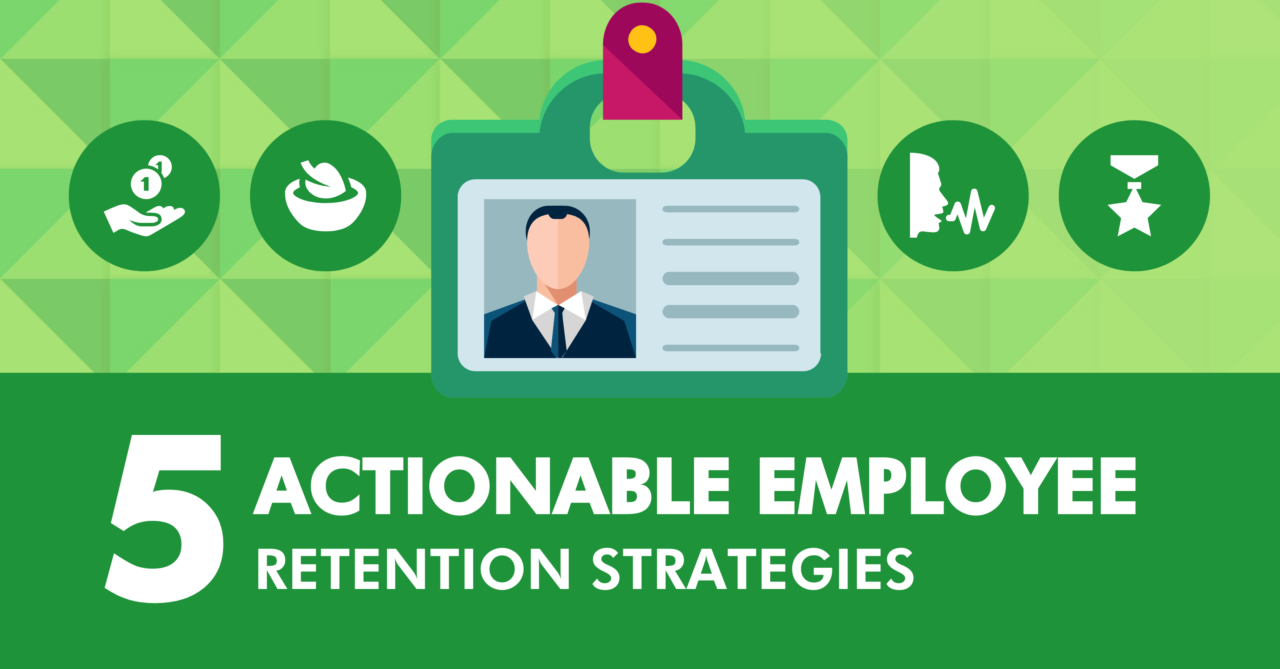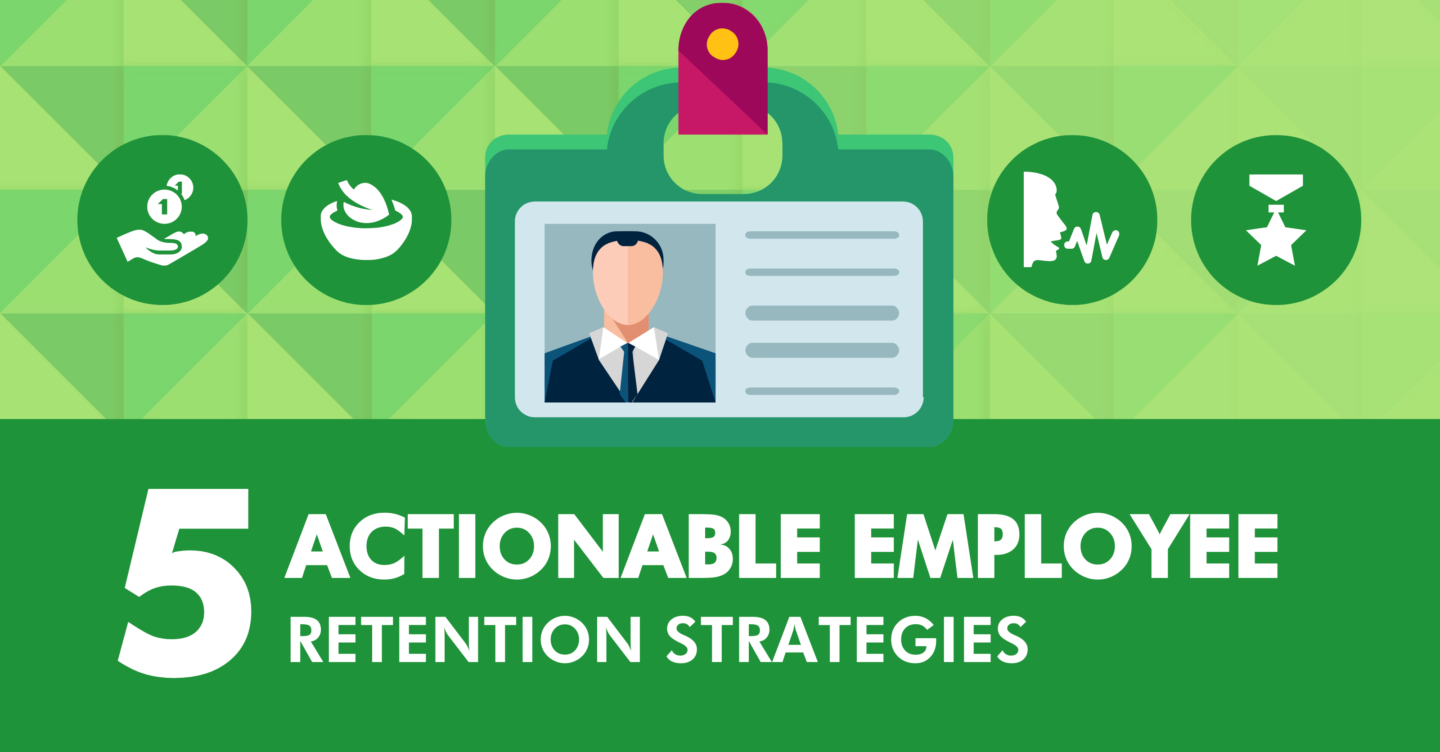
5 Actionable Employee Retention Strategies
The United States has an employee turnover rate of 13%, which is the 5th highest turnover rate in the world. Canada’s rate of 16 per cent sits above that of the United States, making it the 4th highest globally.
While American and Canadian governments stress the importance of cultivating work environments that promote long-term employment, it is evident that many companies still fail to implement effective employee retention strategies.
The top cited reasons behind employee turnover include a lack of opportunity to advance within a company (45 per cent), dissatisfaction with senior management (41 per cent), and the work environment (36 per cent).
An effective employee retention strategy would work to eliminate the factors in these spheres that motivate employees to seek employment elsewhere.
Why Are Employee Retention Strategies Important?
Adverse Effects of Poor Employee Retention
While it should always be a central aim for organizations to keep their employees engaged and active in the workforce, high employee turnover has more detrimental effects than a loss in morale. In fact, high turnover rates can end up being extremely costly for organizations. The cost for the replacement of an employee varies across different industries and organizations, but it is common for an employer to have to pay double an employee’s salary for replacement after they quit.
Unfortunately, the consequences of poorly managed employee retention go further than the annual budget. Other detrimental effects include:
- Loss of Company Knowledge: when an employee leaves a company, they take with them instrumental knowledge about the company itself, including customer information, status on current projects, and so on. When the turnover rate is high, the amount of people no longer in the workforce who have a detailed understanding about the functioning of the organization increases regularly.
- Interruption of Customer Service: organizations that utilize employees skilled in customer service face the issue of the maintenance of client trust. Customers and clients choose to stay in partnerships with organizations largely due to the nature of the relationship with the employees they interact with. With high turnover rates, the time required to develop trusting relationships with clients eats into time that could be spent strengthening existing relationships and furthering the goals of the organization.
- Regaining Efficiency: the time and resources required to hire anew and train a new employee is not lost on managers anywhere. Not only is the process generally expensive, but it leads to a temporary loss in overall efficiency, because resources and the efforts of several existing employees are exhausted on rebuilding a space for the new employee.
When a company implements a program that prioritizes consistent and effective employee retention strategies, it ensures that valuable team members stay employed, it also works to balance and maintain job performance and productivity.
Actionable Employee Retention Strategies
There is no strict rulebook to follow when cultivating an employee retention plan in an organization, because employee retention varies significantly depending on the nature of the organization itself. However, there are general strategies you can follow that are guaranteed to keep valuable employees motivated to continue employment within your organization.
1. Competitive Salary and Benefits
The role that salary and benefits play in an employee’s satisfaction with their work-life is apparent. In fact, employees are most likely to cite their salary as the top reason for the dissatisfaction that ultimately leads to their decision to quit. This is tightly intertwined with career advancement opportunities employees feel they have, the quality and quantity of the benefits offered, and the job location and accessibility of the workplace.
For most individuals, certain financial stability will be a motivating factor to remain in a position. Further, health benefits and workplace insurance concerns function in a similar way, providing a sense of safety and comfort to employees while simultaneously being beneficial to them particularly when raising a family. Therefore, when constructing effective employee retention strategies, it is important to keep in mind what is offered by competitors in terms of salary and benefits. Titles and promises of engaging projects are typically not enough to attract employees, and to motivate them to stay. While challenge in one’s role is important, It is security and stability that does the long-term work.
The importance of maintaining competitive wages seems like a no-brainer. However, this is a trap many employers fall into. Simply modifying salaries and benefits to remain competitive on the job market, while effective in providing a sense of security to the employee, can be a costly effort to make if it is the only employee retention strategy in place. It should instead work as a component of a larger, cost-effective, employee retention system.
2. Effective Hiring
The character and competency of an employee play important roles in a hiring manager’s decision. If a potential hire reads as a job-hopper / flight risk, or as someone who is not a good fit for the team or organization, it is vital not to pursue such a candidate as they will inevitable consume valuable time and costly resources expelled in the hiring and training processes. However, the role of efficient hiring in effective employee retention goes further than being a good judge of character.
Transparency in the hiring process is key. Employers are should never look to bait potential hires with unrealistic job descriptions and expectations. Clearly outlining what is expected at the beginning of the process drastically reduces the potential of a new employee’s early exit.
New hires are likely to feel more comfortable and confident in staying in a position if they are well-informed beginning at the very start of the hiring process. A communicative onboarding experience for a new hire builds a foundation of positivity and security in the new job.

3. Be Mindful of the Well-Being of the Employee
The balance of work and personal life needs to be healthy for employees to feel secure and comfortable in their position. If an employee feels as though most of their waking life is spent working, and they barely have time for anything else, they blame the employer for thrusting that imbalance upon them.
While a quick fix to issues of this nature may be to offer increased salaries, smaller businesses that cannot afford to remain competitive in their offered wages need to rely on a different strategy: alleviating the discomfort of the employee directly. In order to maintain consistent employee retention, it is the responsibility of the employer to remain aware of the frequent points of frustration faced by employees in their specific industry. This can be accomplished through consistent communication and employee check-in, either indirectly through surveys, or directly through explicit feedback and input.
Once an employer is in tune with the pain points of their employees, they can then work to alleviate the stressors accordingly by adjusting the demands placed on employees and the policies surrounding work culture and their professional expectations.
Good employers not only know how to address the complaints of their workforce but are also able to stay attuned and recognize those employees who do not overtly express their frustrations. In many cases, employees who eventually quit due to the stressful amount of demands placed on them typically don’t realize that they are being overworked until it is too late. Therefore, it is not only important for the employer to stay cognisant of the well-being of their employees in the resolution of conflicts, but also encourage a work culture that does not lead to a constant output of an exhausted and frustrated workforce.
4. Being a Leader
Effective leadership is integral to employee retention, because employees want to feel they can entrust in the vision of who it is they are following. While salaries, benefits, and open communication cultivate a sense of security, it is strong leadership that boosts employee morale and motivates workers to remain in their jobs. Some essential characteristics of good leadership include:
- Clear Direction: good leaders effectively outline where they see the organization heading.
- Ability to Handle Challenges: instead of offloading stress onto employees, leaders know how to properly manage stressful situations and problem-solve positively and efficiently.
- Desire for Quality: when dealing with both customers and employees alike, an effective leader always knows to offer the best possible services and experience possible.
- Belief in the Importance of People: good leaders recognize the importance of the employee in the success of an organization.
- Ability to Inspire Confidence: effective leaders make employees feel confident in their own abilities and contributions, and enthusiastic about the direction in which they are headed.
For more, check out these 12 Essential Leadership Qualities.
People follow as they are led, and an ineffective leader creates a negative work environment, which decreases an organization’s chances at maintaining a healthy employee retention rate. Speed of the leaders = speed of the pack.
5. Encourage Employee Engagement
Employee engagement refers to the level of commitment and energy an organization’s employees bring to the workforce. Employees who are consistently engaged are ultimately more productive, content, and much more likely to remain loyal to an organization.
Alternatively, when employees are not engaged at work, they have little incentive to stick around. This can be one of the greatest challenges an employer faces when it comes to employee retention, as sometimes even an increase in pay is not enough to keep an employee who does not feel engaged. When an employee is disengaged, they are not likely to see a promising future in the organization, a future that includes satisfying work and a clear path of advancement and amelioration in their work life. Therefore, a work environment and a professional structure that encourages engagement is integral to effective employee retention.
Improving employee engagement is possible, but it requires consistent effort and flexibility. Some components an employer can focus on when improving employee engagement include:
- Recognition: publicly recognizing the accomplishments of employees. Demonstrating that an employee’s contributions are valued fosters further engagement, and resultingly, strengthens the chance at effective employee retention.
- Culture: establishing a culture that encourages, supports, and motivates employees to perform at their best. The elements that make up a positive and encouraging work culture are unique to every organization but envisioning the desired culture that will improve employee retention rates is the responsibility of the employer.
- Development: communicating learning opportunities and the potential opportunities for advancement that lie in an employee’s professional trajectory. Establishing clear paths of growth and providing the resources necessary for employees to achieve development goals, works to keep them engaged as they progress. As a result, they will feel continuously motivated to keep their job, increasing the organization’s employee retention rate.

Final Thoughts
Creating a positive, successful workplace begins with developing a strong program of effective employee retention strategies. Any successful employee retention strategy asks of a leader one simple thing: to think of things from the team’s point of view. Employees want to feel that their contributions are valued, and their efforts appreciated by their employer. It is the responsibility of the employer to provide a sense of security to their employees, but also to cultivate a culture of open communication and transparency, reciprocal feedback and improvement, and clear development plans spearheaded by leaders who know to constantly push to challenge and excite their employees.




